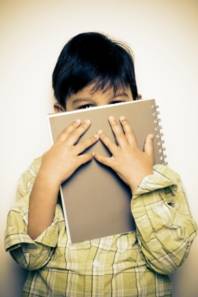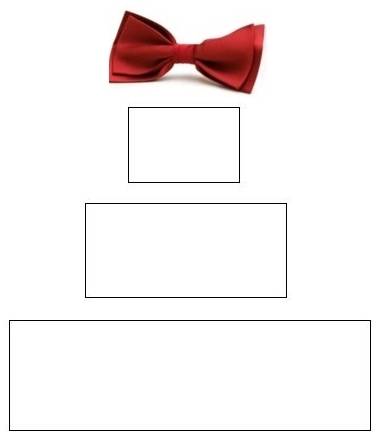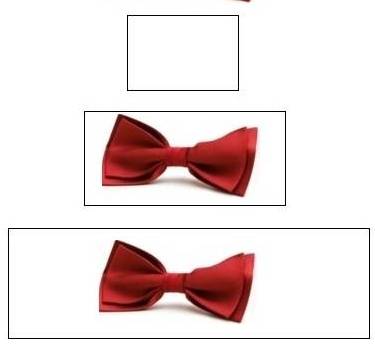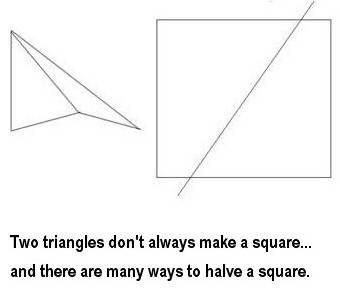Critical thinking in children: Are we teaching our kids to be dumb?
© 2008 – 2022 Gwen Dewar, Ph.D., all rights reserved

In his review of the inquiry, Stephen Norris notes that critical thinking in children is uncommon:
"Nearly students do non score well on tests that measure ability to recognize assumptions, evaluate arguments, and assess inferences" (Norris 1985).
Why is critical thinking so hard? Some argue that humans aren't designed for it.
According to this idea, evolution hasn't equipped us for abstract, logical reasoning. Instead, natural selection has shaped the brain to solve specific, evolutionarily- relevant, problems– similar fugitive predators and identifying which people are breaking the rules (Tooby and Cosmides 1992).
Maybe these folks are right. I'k non going to argue that hither. Instead, I want to make a different indicate:
We often train our kids to recall in fallacious or casuistic ways.
My prove?
Consider these real-life examples of how TV, books, educational software, and fifty-fifty some teachers–discourage critical thinking in children.
How to discourage critical thinking in children: The case of Minnie Mouse
How about this a scene from Disney's "Mickey Mouse Playhouse," a TV program for preschoolers.
Minnie Mouse–Mickey'southfeminissima pal–has a problem. She has been packaging and wrapping gifts, including a bow (just like the one on her head).
Just Minnie forgot to label the packages she'southward wrapped, and now she's not sure which box contains the bow.
In that location are 3 possible boxes—small, medium-sized, and large.
Minnie asks:Which box might contain the bow?

Minnie holds out her hands to show us how large the bow is. She compares this with the size of the boxes. The bow seems too large for the smallest box. But it appears small plenty to fit in the other two.

So…the reply is that the bow might be in either the medium-sized box or the big box. Right?
Wrong.
Minnie tells us that the bowMUSTbe in the medium-sized box.
Why does Minnie deny the logical possibility that the bow might be in the large box?
Presumably considering the writers weren't thinking direct and didn't say what they meant.
Manifestly, what they really wanted to enquire was this:
"Which is the smallest box that the bow could fit in?"
But and so again, at that place is the possibility that the bow could be in the smallest box. The bow seems as well big for the smallest box. But what if Minnie had folded or wadded up the bow to brand information technology fit?
And so perhaps the writers should accept posed this question:
"Which is the smallest box that the bow could fit in—assuming that Minnie didn't scrunch upwards the bow?"
The point
Does this audio nit-picky or pedantic? Maybe information technology does to the writers of the Mickey Mouse show. Simply I'chiliad really just asking for some common sense.
In the existent world, people practise scrunch and they actually do sometimes packet items in boxes that are a fleck larger than needed. Why should we—the viewers—assume that they don't?
The answer is that we shouldn't. Not unless we know something about Minnie Mouse. Not unless we know what her unstated assumptions are.
And that's the indicate. I don't know what goes on in Minnie Mouse's head, and I don't suppose that my kids do, either. The writers of the Mickey Mouse show asked us to solve the problem based on information virtually the size of the bow and the size of the boxes.
Critical thinking means that we consider all the possibilities, not just the one that the Mouse thinks is near probable.
What happens when your child watches this sort of thing? It seems to me that the Mickey Mouse prove is didactics something very different from disquisitional thinking. It's teaching kids conformist thinking. Don't look at issues objectively or logically. Instead, figure out what the authorities desire you to say.
You might wonder if immature children really think this way. Aren't kids — like the boy in the story of the Emperor's New Clothes — supposed to speak their minds?
But experiments suggest that preschoolers are inhibited by the pronouncements of authoritative adults.
When grown-ups tell them how something works, kids don't question it. They human activity as if the adults have told them everything they demand to know. They become less inquisitive, less probable to investigate on their own (Bonawitz et al 2011; Buchsbaum et al 2011).
Not just Minnie Mouse: How formal educational experiences discourage disquisitional thinking in children
It'due south bad enough if children's television programs are undermining critical thinking. Just what about textbooks, educational software, and everyday experiences in the classroom?
I've establish the Minnie Mouse fallacy in a book intended to teach math concepts to preschoolers. In this example, the reader was asked to find the correct birdhouses for an assortment of (differently-sized) birds.
And of there are lots of other illogical or incorrect-headed lessons that are kids are asked to absorb.
For instance, consider this story reported by educational psychologists Clements and Sarama (2000):
Young Leah is playing a computer game that teaches geometry. It asks Leah to cull a fish that is shaped like asquare.
Leah picks a fish with a perfectly square body, only the shape is rotated so that i of its corners points direct downwards.
The program tells Leah that she'south incorrect. That's non a square. That'southward a "diamond fish!"
Uh-oh. A square is but a foursquare when two of its sides are aligned with the horizontal?
Teaching kids misconceptions most geometry
Clements and Sarama written report other mistakes, including these misconceptions that kindergarten teachers have been observed to pass forth to their impressionable young students:
- All diamonds are squares
- A foursquare is non a rectangle
- If you lot put two triangles together you'll brand a square
- If y'all cut a square in half you'll make a triangle
And so on. You become the thought.

How much does this matter?
Clearly, we don't want people educational activity our kids things that are illogical and wrong. Just how much damage does this really do?
Quite a flake, I'd say. In the case of Minnie Mouse, kids learn to recall with blinders on. Don't consider all the possibilities. Stick to the conventional solutions.
In the case of the square that isn't really a square, kids learn bad facts and they lose the opportunity to build up a coherent theory of geometry.
The consequences may be long-lasting. Clements and Sarama report that 6-yr olds may hold their misconceptions about geometry until they reach centre school.
What about Minnie? The kids who pass Minnie's exam are socially perceptive. They recognize their teachers' implicit assumptions and tell their teachers what they want to hear. And they become rewarded for it until they meet upwardly with a logical, less civilisation-jump instructor. Or a logical test. And and then, perhaps for the outset fourth dimension ever, these kids start to fail.
What happens then? Do these kids conclude that they aren't cut out for "difficult core" courses in math or science? Maybe.
What tin we do?
Experimental interventions suggest that nosotros can teach critical thinking skills to middle school students, and maybe even younger kids.
For more than information, check out these research-based tips for opens in a new windoweducation critical thinking in children and adolescents.
As I note in that article, it appears that teaching critical thinking in children can actually boost their IQ scores.
And every bit for parents with veryyoung kids–the kids who might be watching Mickey Mouse?
First upwardly, we should accept notice of a crucial discovery: Even before the historic period of five, kids seem to empathise that claims backed past evidence are more adequate than claims lacking evidence.
They know, for instance, that it's not plenty for you to claim that you know what'due south inside a container. If you lot haven't looked, they're more likely to guess your claim as unacceptable (Butler et al 2018; Fedra and Scmidt 2019).
So even young children are ready to talk virtually the fundamentals of fact-verification. How practice yous know? Did you expect? Did you check?
But there is a complication.
Equally noted above, young children are also inclined to follow our lead.
This is a useful trait in a species that depends on transmitting cultural information. Kids are good imitators. But their eagerness to follow has a downside. In experiments, children exposed to adult education have get less inquisitive. They were less probable to exam alternative ways of doing things.
For example, when an developed showed preschoolers a new toy, the children's subsequent deportment depended on how the adult behaved.
If the adult acted like a teacher — explaining the "correct" way to operate the toy — the children hewed very closely to the teacher's procedure.
But if the adult acted clueless — as if she didn't know how to operate the toy — the children tended to make a more than thorough investigation of the toy's features.
Kids were more probable to discover alternative ways of operating in the toy — including ways that were more than efficient than the "correct" procedure modeled by the teacher (Bonawitz et al 2011; Buchsbaum et al 2011).
So if we desire to nurture critical thinking, a proficient commencement stride is to provide young children with opportunities to tinker and examination and experiment —without telling them what to expect.
In addition, nosotros should monitor the messages our children are getting — from people, books, electronic media — and discuss the errors we spot with our kids. We demand to teach our kids that sometimes fifty-fifty smart, authoritative adults brand mistakes.
And most of all, our kids need positive reinforcement for thinking critically, for existence logical, and for offering unconventional solutions to issues. Before we correct a child'south incorrect reply, we should reflect on whether or not it actually is incorrect.
References: Critical thinking in children
Bonawitz East, Shafto P, Gweon H, Goodman ND, Spelke E and Shultz L. 2011. The double-edged sword of education: Pedagogy limits spontaneous exploration and discovery. Noesis 120(3): 322-330.
Buchsbaum B, Gopnik A, Griffiths TL, and Shafto P. 2011. Children's false of causal action sequences is influenced by statistical and pedagogical testify. Cognition 120(3): 331-340.
Butler LP, Schmidt MFH, Tavassolie NS, Gibbs HM. 2018. Children'south evaluation of verified and unverified claims. J Exp Child Psychol. 176:73-83.
Clements DH and Sarama J. 2000. Immature children'southward ideas near geometric shapes. Teaching Children Mathematics half dozen(8): 482-487.
Fedra East and Schmidt MFH. 2019. Older (but not younger) preschoolers reject wrong cognition claims. Br J Dev Psychol. 37(1):130-145.
Lucas CG, Bridgers Southward, Griffiths TL, Gopnik A. 2014. Westward opens in a new windowhen children are amend (or at least more open-minded) learners than adults: Developmental differences in learning the forms of causal relationships. Cognition 131 (2): 284
Norris SP. 1985. Synthesis of Enquiry on Critical Thinking. Educational leadership 42(8): 40-45.
Tooby J and Cosmides 50. 1992. Cognitive adaptations for social exchange. In: J Barkow, 50 Cosmides and J Tooby (eds): The adapted mind. New York: Oxford Academy Press.
Content final modified ii/2019
Source: https://parentingscience.com/critical-thinking-in-children/
0 Response to "Critical thinking in children: Are we teaching our kids to be dumb?"
Postar um comentário